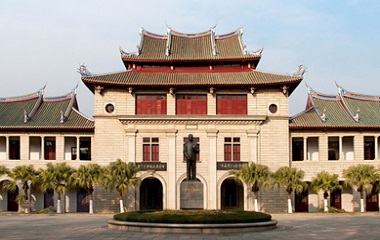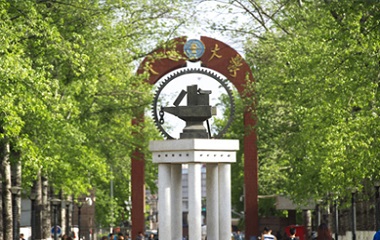
In celebration of the 50th anniversary of diplomatic relations between China and Malaysia, 25 10th-grade students from Kian Kok Middle School in Sabah, Malaysia, participated in a five-day cultural immersion program in East China's Jiangxi province from Sept 15 to 19.
Together with five juniors from Jiangxi Agricultural University (JXAU), the Malaysian students took part in various excursions, including visits to Jingdezhen, known as the "porcelain capital" of China, as well as Nanchang's iconic Tengwang Pavilion and the 2,000-year-old tomb of Haihunhou. They also engaged in a traditional Chinese lion dance and attended a class on Chinese culture at JXAU.
For most Malaysian students, this was their first visit to China. Zhang Hui Xiang, a student from Kian Kok Middle School, said that he had only seen videos and posts about China on social media platforms like Tik-Tok and Xiaohongshu before this trip.
Chinese students had similar experiences. Ren Yuange from JXAU recalled that her initial impressions of Malaysia were shaped by her high school geography textbook.
However, shared cultures and customs quickly fostered familiarity and friendship among the students. With nearly 23 percent of Malaysians having Chinese ancestry, many students at Kian Kok Middle School have family ties to Fujian and Guangdong provinces, which allows them to communicate effortlessly in Chinese and find common ground.
For example, during a mooncake-making activity, the students discovered that they all celebrate the Mid-Autumn Festival in similar ways — by enjoying mooncakes, admiring the full moon, and gathering with family.
"There are unique aspects of our cultures, but there are also many surprising similarities," said Yang Hui Min, a Malaysian student.
Yin Jiaxing from JXAU also acknowledged the importance of mutual language and traditions in building friendships with Malaysian students. "A sense of shared cultural identity is a great starting point for further communication and exchanges," he said.
For many Malaysian students, one of the most memorable experiences was visiting Taoxichuan Ceramic Art Avenue, a landmark in Jingdezhen. They admired blue and white porcelain artifacts and even had the chance to create their own pieces. "I was in awe the whole time," Zhang said. "The artifacts were so beautiful that I couldn't find words to describe them."
The experience was also unique for the Chinese students, many of whom had little knowledge of how ceramics are made. Sheng Yang, a student at JXAU, saw the visit as an opportunity to appreciate her own culture from a different perspective and to connect more with Malaysian students.
"Neither of us knew how to make porcelain, so we started discussing and experimenting together," Sheng recalled. "Although our final products weren't that impressive, we really enjoyed the process."
The trip made a lasting impression on the students, and they are already planning future visits. "As soon as I returned home, I asked my dad to take me on a monthlong trip to China for my next vacation," Zhang said.
Yang noted that the mutual visa exemption policy between China and Malaysia has made it easier for people from both countries to visit each other.
Ren added that this program was more than just an exchange between individuals or between Jiangxi and Sabah — it held significant importance at a national level.
"I believe this event has injected new vitality into China-Malaysia interaction," she said. "I'm confident we'll see even greater collaboration in the future. Together, hand in hand, the two countries will build a bright tomorrow."










